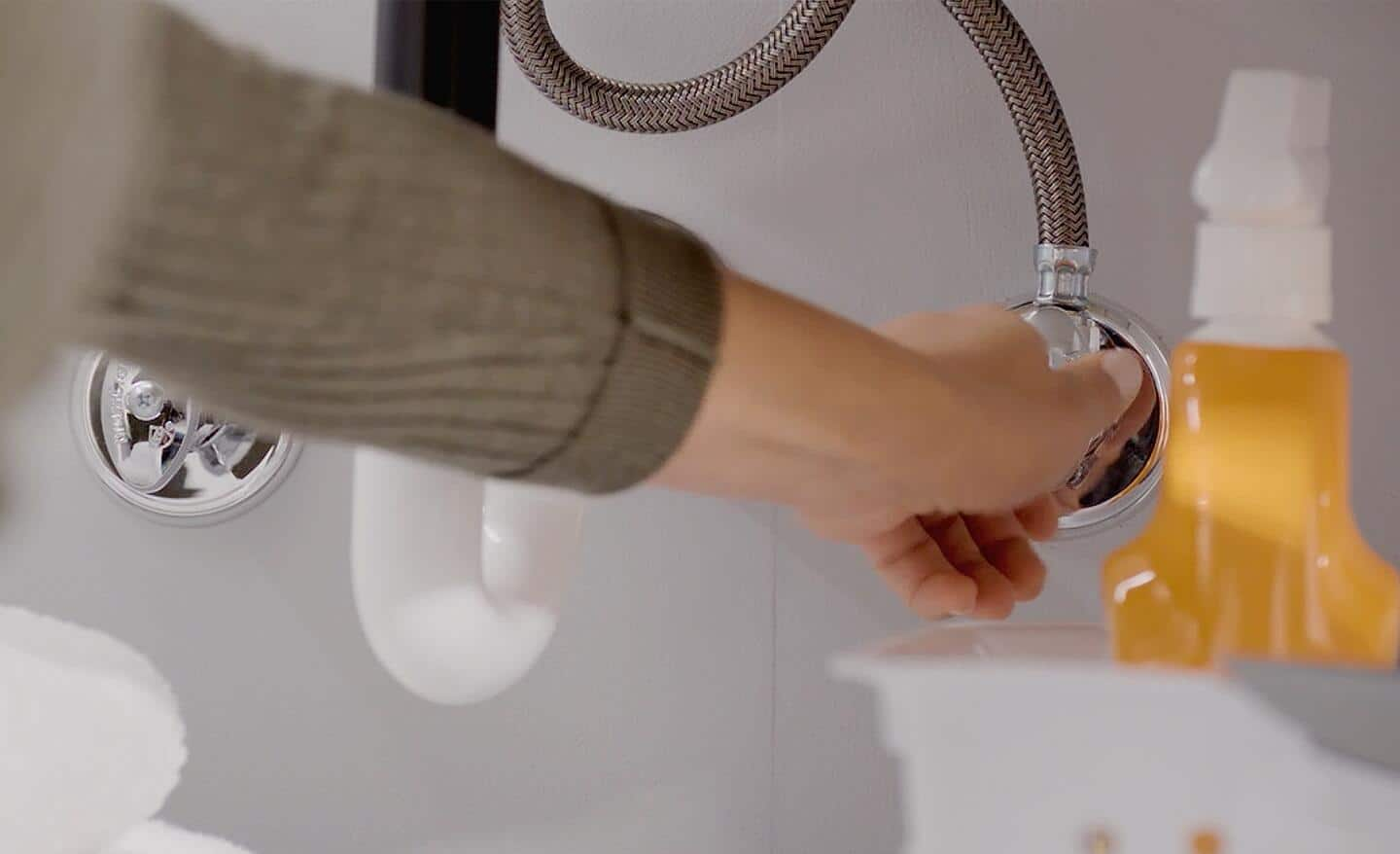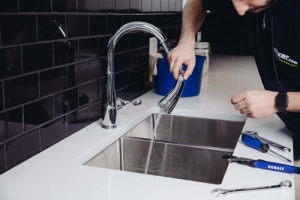The Importance of Dealing with a Faulty Faucet
The Importance of Dealing with a Faulty Faucet
Blog Article
Just how do you really feel in relation to Water Dripping from Faucet: Why and How to Fix?

Dripping faucets may appear like a small aggravation, yet their effect surpasses simply the nuisance of the sound. From wasting water to incurring unnecessary economic expenses and health and wellness risks, disregarding a trickling faucet can cause numerous effects. In this write-up, we'll look into why it's critical to resolve this usual family problem immediately and successfully.
Waste of Water
Ecological Effect
Leaking faucets add dramatically to water waste. According to the Environmental Protection Agency (EPA), a single faucet trickling at one drip per secondly can lose more than 3,000 gallons of water per year. This not just pressures water resources however additionally impacts environments and wildlife dependent on them.
Financial Prices
Boosted Water Bills
Beyond the ecological effect, dripping taps can pump up water costs considerably. The collected waste over time converts into greater energy expenses, which can have been avoided with prompt repair services.
Potential Residential Or Commercial Property Damages
Furthermore, prolonged leaking can lead to harm to fixtures and surfaces surrounding the faucet. Water accumulation can trigger discoloration, rust, and also structural concerns if left ignored, causing additional repair work prices.
Health and wellness Problems
Mold and Mold Growth
The continuous visibility of moisture from a trickling tap produces an optimal environment for mold and mildew growth. These fungis not only jeopardize indoor air top quality but additionally position wellness risks, especially for people with respiratory system conditions or allergies.
Waterborne Illness
Stationary water in trickling faucets can become a breeding ground for microorganisms and other pathogens, boosting the threat of waterborne conditions. Impurities such as Legionella microorganisms thrive in stagnant water, potentially bring about serious illnesses when ingested or inhaled.
DIY vs. Expert Repair service
Benefits and drawbacks of Do It Yourself Repair
While some may attempt to fix a dripping faucet themselves, DIY repairs come with their own set of obstacles. Without correct expertise and devices, do it yourself attempts can worsen the problem or cause insufficient repair services, extending the issue.
Advantages of Working With a Specialist Plumber
Working with a professional plumber makes certain that the underlying cause of the trickling tap is dealt with efficiently. Plumbings possess the proficiency and devices to diagnose and fix tap issues efficiently, conserving time and lessening the risk of more damages.
Step-by-Step Guide to Fixing a Dripping Tap
Devices Required
Prior to attempting to fix a dripping tap, collect the needed tools, consisting of an adjustable wrench, screwdrivers, replacement components (such as washers or cartridges), and plumber's tape.
Common Tap Issues and Their Solutions
Identify the sort of faucet and the details problem causing the drip. Typical problems consist of worn-out washing machines, corroded shutoff seats, or defective O-rings. Describe producer guidelines or on the internet tutorials for detailed assistance on fixings.
Preventive Measures
Normal Maintenance Tips
To stop dripping taps, perform regular upkeep such as cleaning aerators, evaluating for leaks, and changing damaged parts without delay. Additionally, take into consideration installing water-saving tools or updating to much more reliable fixtures.
Value of Prompt Repairs
Attending to trickling taps as quickly as they're noticed stops more water wastage and prospective damage, eventually conserving both water and money over time.
Influence On Home Worth
Assumption of Well-Maintained Property
Preserving a building in good condition, including addressing maintenance problems like leaking taps, improves its regarded worth and worth amongst possible buyers or renters.
Influence on Resale Value
Characteristics with well-kept plumbing fixtures, including faucets, command higher resale values in the real estate market. Dealing with dripping faucets can add to a positive perception throughout residential property examinations and arrangements.
Ecological Obligation
Individual Contribution to Preservation
Taking duty for taking care of leaking faucets aligns with more comprehensive initiatives toward water conservation and environmental sustainability. Every individual's activities collectively make a significant impact on protecting valuable resources.
Lasting Living Practices
By focusing on timely repair work and adopting water-saving behaviors, people contribute to lasting living methods that benefit both present and future generations.
Conclusion
Resolving a leaking faucet goes beyond plain comfort; it's a vital step towards saving water, reducing monetary costs, and guarding health and wellness and home. Whether through do it yourself repair work or specialist support, taking action to take care of dripping taps is a tiny yet impactful means to promote accountable stewardship of resources and add to a much healthier, a lot more sustainable future.
How to Fix a Dripping or Leaky Faucet
A leaking faucet is one of the most common problems that homeowners encounter, but it being commonplace doesn’t make it any less annoying. The constant drip drip drip of a leaking bathtub faucet, showerhead, or sink tap can disturb your home’s serenity. Left neglected, a dripping faucet can also result in higher water bills and discoloration or mold growth in your sink or plumbing fixtures.
Fortunately, you don’t have to be a trained plumber to know how to stop a dripping faucet. With some basic tools, replacement parts, and a little patience, leaky faucet repair is a breeze. In this article, we’ll explain what causes dripping faucets and how you can fix them.
What Causes a Leaking Faucet?
Kitchen and bathroom faucets come in all manner of designs, but most involve some combination of valves, O-rings, seals, and washers. The O-ring is usually the weakest link, but any one of these pieces can wear down over time. Heat, moisture, temperature fluctuations, minerals, mold, and movement can contribute to warping and corrosion, breaking the watertight seal. This just comes with the territory of being a homeowner. Everything is always subject to wear and tear, and some component parts of your appliances and fixtures need to be replaced on occasion. At least replacement O-rings are cheap!
More rarely, dripping faucets can be a symptom of excessively high water pressure. Were this the case in your home, you would probably notice that the leak is not isolated to one faucet. Water pressure issues are harder to resolve on your own. We recommend contacting a professional plumber if you suspect your water pressure is too high.
How to Fix a Dripping Faucet
Pipe wrench or monkey wrench Allen wrench set Screwdrivers Old towel or rag Shut off the water.
Before you do anything, you need to turn off the water to keep from drenching your kitchen or bathroom. You should find a valve under the sink and against the wall. Once you’ve turned this valve, try turning the faucet on to confirm that the water source has been cut off.
If you can’t locate your local valve for the faucet you’re working on, you can always shut off the water to the house at the main valve. Of course, this will prohibit anyone from using the sinks, showers, or toilets while you’re working on the faucet that’s giving you trouble.
Plug or block the drain.
You’ll be disassembling the faucet and removing some small bits of hardware. Plug the drain with a stopper or rag to avoid the possibility of a small screw falling into your P-trap.
Take apart the faucet assembly.
There are several varieties of kitchen and bathroom faucets, each with its own manner of assembly. For detailed instructions on how to disassemble your faucet, you can refer to the fixture’s manual or contact the manufacturer. If you know whether you have a ball, disc, cartridge, or compression faucet, you can find detailed schematics online.
In general, you need to begin by removing the faucet handles. You might notice a small screw that you’ll need to remove with a screwdriver or Allen wrench. If you don’t see any visible securing hardware, it’s likely hidden under a decorative cap that can be unscrewed or popped off with flathead screwdriver.
Remove each piece methodically, consulting a schematic when necessary. Take notes or arrange the pieces in such a way to make it easier to correctly reassemble the faucet later.
Remove the cartridge.
Once you’ve removed the handles and securing hardware, you should be able to remove the valve cartridge or stem. Some cartridges will slide right out. Other faucet models will require you to loosen a nut with a pipe wrench before you can remove the valve stem.
Examine the exposed hardware.
With the cartridge or stem removed, inspect the component parts. Check the rubber O-rings for wear and tear. Also examine the seat washer for corrosion or other damage. These pieces are usually the responsible parties for a dripping faucet, but it’s worth inspecting the other component parts while you have the faucet disassembled.
Find replacement parts.
Once you’ve identified which faucet component has failed, find an identical replacement. Your local hardware store should have O-rings, seat washers, and other standard components in stock. If you have a luxury or uncommon faucet, you may have to contact the manufacturer for a replacement part.
It’s a good idea to take your old parts with you to the hardware store so you can compare them with the store’s inventory and be sure you’re purchasing the correct replacement.
Reassemble the faucet.
With your new parts in hand, reconstruct the faucet and handles. Don’t be tempted to overtighten screws or nuts. You might think this could create a better seal, but it can instead damage or bend a delicate part of the assembly and create a new problem for you.
Turn on the water and test the faucet.
The only thing left to do is test your work. Unplug the sink, turn the water back on, and try the faucet. Congratulate yourself on a job well done!
https://www.libertyhomeguard.com/how-to-fix-a-dripping-or-leaky-faucet/

I stumbled upon that piece on 4 Common Reasons for a Leaky Faucet when browsing the web. Sharing is caring. One never knows, you may be helping someone out. Thank you so much for taking the time to read it.
Report this page